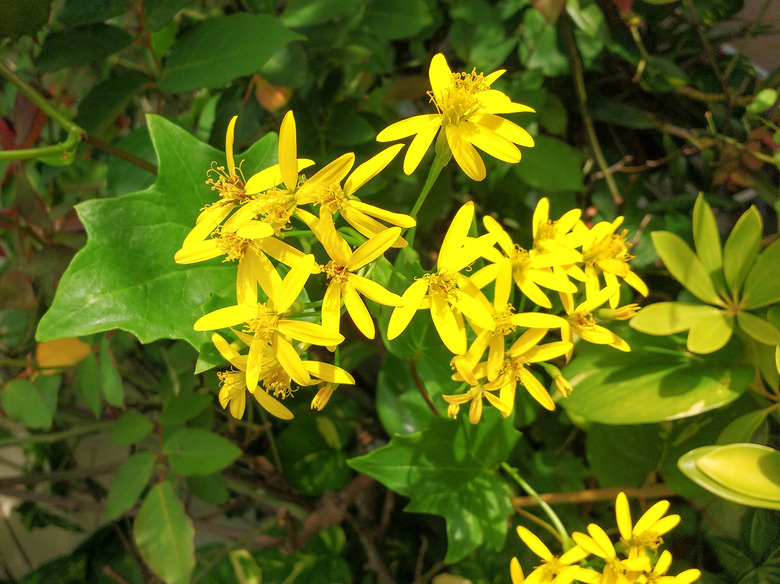How To Grow German Ivy
We may receive a commission on purchases made from links.
German ivy or Cape ivy (Delairea odorata, formerly Senecio mikanioides) is neither a true ivy nor is it from Germany. Instead, it originates from South Africa and merely mimics the ivies in the Hedera genus with its lobed leaves and vining growth habit. German ivy is not fussy when it comes to growing conditions. In fact, its adaptability and aggressive growth make it an invasive species.
Warning
This plant is considered a noxious weed, which poses a threat to the healthy biodiversity of many regions. Do not grow this plant in the landscape, relegating it to houseplant status only.
Caution: Grow Indoors Only
Caution: Grow Indoors Only
When grown outside its native habitat in South Africa, German ivy naturalizes quickly and becomes an invasive species. Its thick growth habit has proved to be particularly problematic along the West Coast, where it has a reputation for smothering native plants in a thick mass of foliage. Its growth is not checked by herbivores, which will not eat it due to high alkaloid content, and it regrows easily from root fragments left in the soil after hand pulling.
With this in mind, it's recommended only to grow German ivy indoors to prevent it from spreading throughout your yard and garden. When safely confined to a pot, it makes an excellent draping plant to pair with houseplants with more upright growth and "naked knees."
Propagating German Ivy
Propagating German Ivy
With only a small percentage of viable seeds detected in German ivy, the most efficient way to grow this plant is via cuttings. Fortunately, German ivy roots readily and does not require a rooting hormone. For best results, take a cutting from a young green stem versus a woody stem. Woody stems will propagate at a rate of about 50 percent, so take several cuttings if you only have woody stems available.
Trim down the cuttings to just 2 inches with one leaf on the stem. Plant the cutting directly in moist potting soil. You can place the cutting in the same pot as a mature annual houseplant, but it may smother a young seedling or choke out its roots. If you don't have a pot ready, the cutting will grow roots if kept in about an inch of fresh water.
Caring for German Ivy
Caring for German Ivy
German ivy can thrive in many different conditions, from full sun to partial shade. It will thrive even with moderate indoor light. It's not picky about soil pH or soil quality, although it will certainly produce the most vigorous growth and vibrant color if it is grown in rich potting soil and given liquid fertilizer on a monthly basis. Consistently moist soil is also considered ideal for German ivy, but this plant won't complain much if you allow the top of the soil to dry out between waterings.
Frost will cause German ivy to die back, but this shouldn't be a problem if you are growing it as a houseplant. Aphids and mealybugs will eat this plant, but they can be dealt with by dunking the vines in soapy water, rinsing the vines with a strong blast from the garden hose or saturating the plant with neem oil.
Trim German ivy vines as needed to prevent them from becoming unruly or smothering other plants. Consider snipping off the flower buds, as German ivy blossoms have a strong, unpleasant odor.
